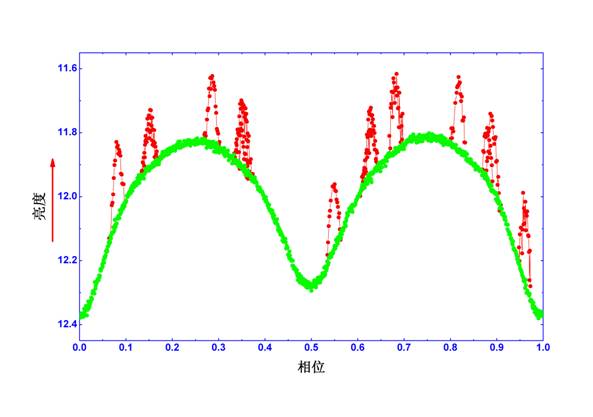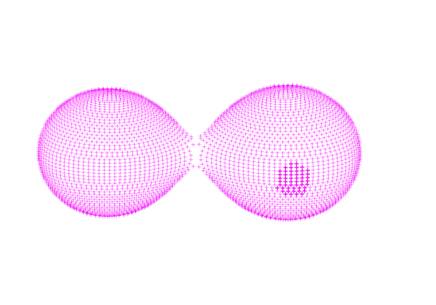Recently, a paper by a team under Shengbang Qian, one of our Professors, was published in ApJS. The work discovered sequential energetic optical flares and a long-lived dark spot on a contact binary via analysis of data obtained at the south pole.
A contact binary is a binary system, in which the constituents are so close to each other that they are physically connected, and consequently share a common envelope. Ever since their discovery in 1903, their structure has remained a mystery to researchers, partly because their activities (such as solar flares) have never been observed up to this point.
CSTAR is an interferometer consisting of many small telescopes located in China's South Pole territories. Its observations constitute the CSTAR catalogue, from which the data used in this study was obtained.
Qian et. al. found that CSTAR 038663 is a contact binary consisting of two K-type stars with a thin common envelope, and an orbital period of 385 minutes. It was also found that this contact binary underwent 15 flare eruptions in the year 2010, each one lasting a duration of 9 to 20 minutes. The flares led to an increase in luminosity, resulting in a 0.16 to 0.27 brightening in the I band. Also discovered on this binary was a dark spot lasting 3 months in 2008. It was roughly 800K cooler than the rest of the photosphere, and covered 2.1% of the entire binary surface area. It can be inferred from these discoveries that contact binaries with a thin common envelope can undergo violent stellar activity.
The following figures show the brightness contributions from the flares superimposed on the binary light curves, and the geometric structure of the 2008 dark spot, respectively.
This project was funded by National Natural Science Foundation of China grants #11133007 and #11325315.
The paper may be cited as follows:
Qian S.-B., Wang J.-J., Zhu L.-Y., Snoonthornthum B., Wang L.-Z., Zhao E. G., Zhou X., Liao W.-P., Liu N.-P., "Optical Flares and a Long-lived Dark Spot on a Cool Shallow Contact Binary", 2014, ApJS 212, 4.

